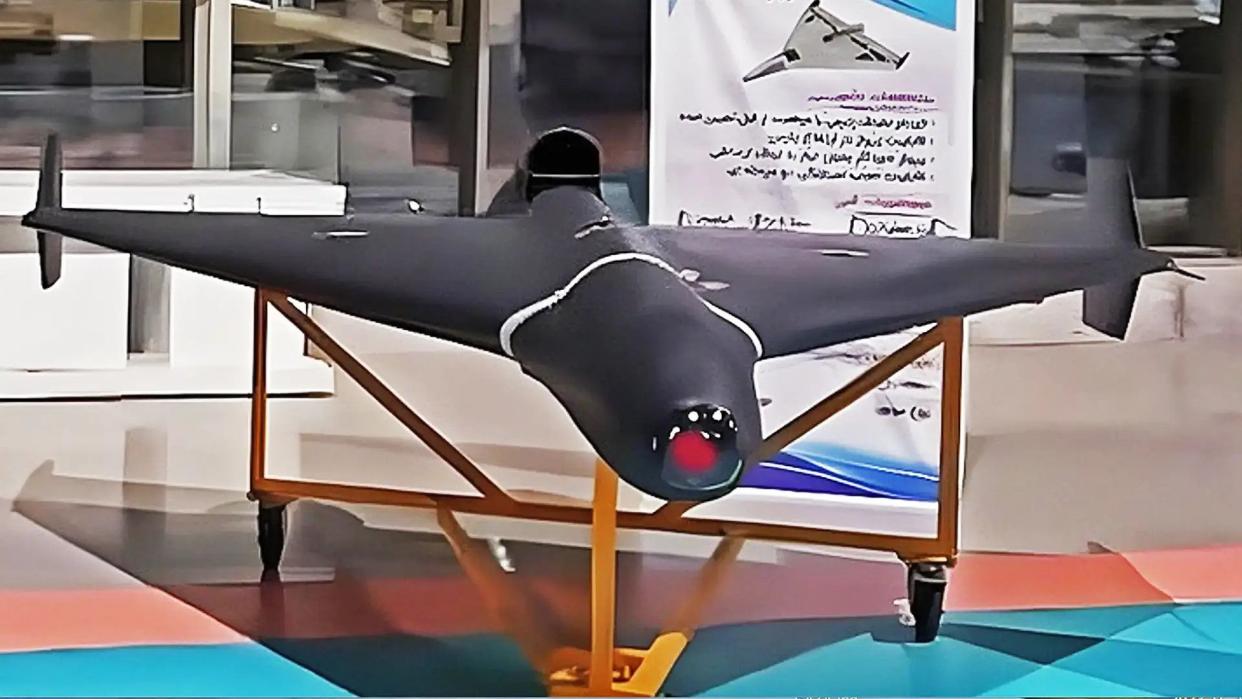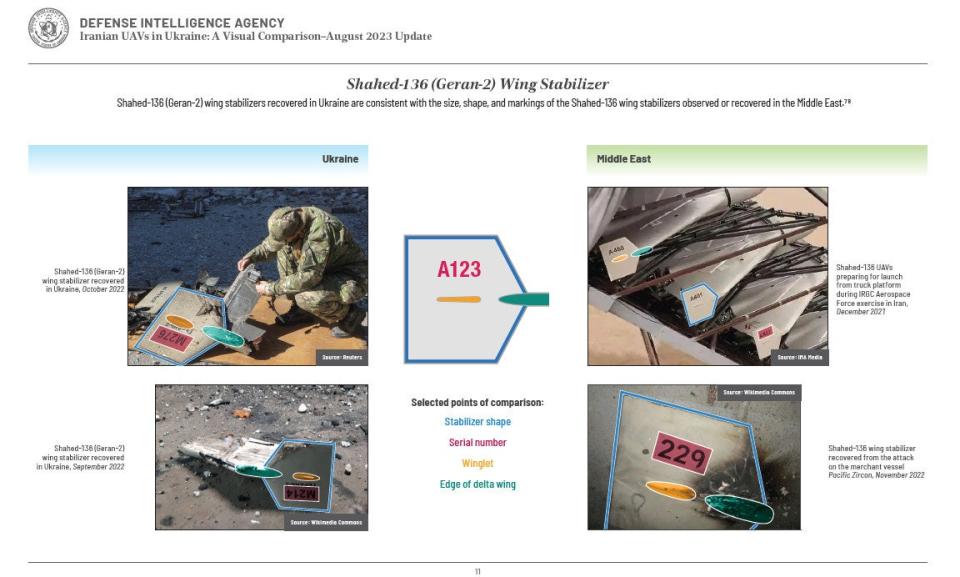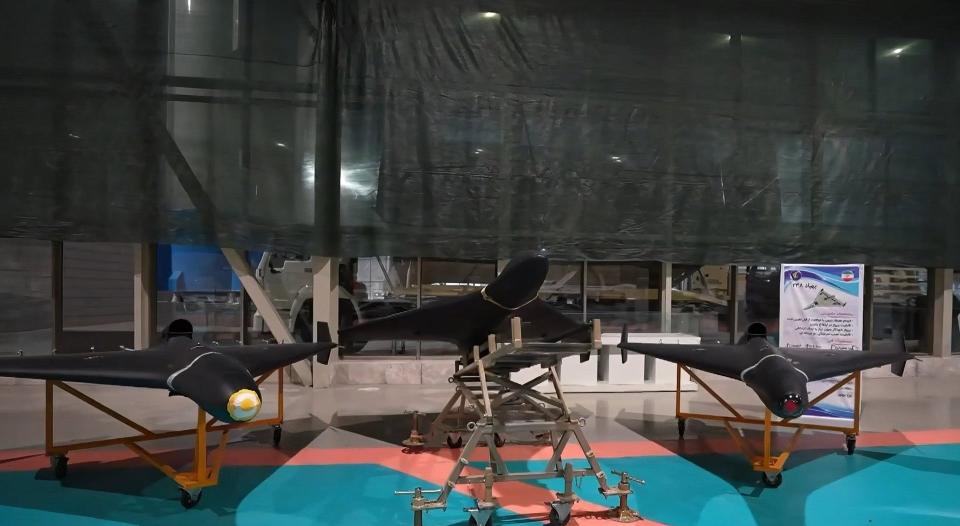Russia May Have Started Using Jet-Powered Shahed Drones In Ukraine

Evidence that Russia is using Iranian jet-powered Shahed-238 kamikaze drones to strike targets in Ukraine has emerged. The Shahed-238 is derived from the Shahed-136, which Russian forces have already been using for more than a year. If this proves to be the case, as The War Zone previously explored in detail, the Shahed-238's increased speed over its propeller-engined predecessors and other additional capabilities present serious new challenges for Ukrainian air defenses.
Pictures that are said to show the remains of a Shahed-238, or a variant or derivative thereof, that was launched at a target in Ukraine appeared on social media earlier today. Where and when the debris was recovered, and whether or not the drone hit its intended target are unknown.
A Telegram channel, which says an officer in the Armed Forces of Ukraine runs it, appears to be the first to share the images. The debris seen in the images looks to include multiple white-colored portions of the drone's body, including what appears to be the drone's top-mounted engine intake. There is also what appears to be a small jet turbine and a control unit of some kind. The only visible exterior markings are "MJO" or "MJ0" written on a part of the body.
The original poster of the images on Telegram notes that Russian Shahed-136 kamikaze drones (which Russia calls Geran-2 and is now assembled locally) had been seen with alphanumeric markings that begin with "M" and posits that the "J" here could stand for "jet." Examples of the Shahed-238 have been seen with markings beginning with just J. However, it is also worth noting that Shahed-136/Geran-2 drones have only ever been seen with their markings on their wingtips, not on their bodies.

Observers have noted the drone's engine could be a TEM Tolue-10, an Iranian clone of the Czech PBS Aerospace TJ100. Previous reports have said that the Shahed-238 is likely powered by a subvariant of the Tolue-10/TJ100 known as the Mini-Turbojet 896. The 896 engine is also said to power the Shahed 191, a design inspired by the larger American RQ-170 stealth drone, one of which Iran captured in 2011.
The Tolue-10/TJ100 has been identified in the past as the engine on multiple Iranian-designed cruise missiles, including the Ya Ali and the Quds-1. The latter of these has primarily been seen in the hands of Iranian proxy groups like Yemen's Houthis.
The War Zone has been unable to independently verify the provenance of the images of the apparent Shahed-238 wreckage recovered in Ukraine. However, last month, a Russian military officer, identified as Major General Vladimir Popov, reportedly told state-run Sputnik TV that examples of a jet-powered version of the Geran-2 were on their way. Iran only publicly unveiled the Shahed-238 in September of last year and you can read more about what is known about the design in depth here.
In his December interview with Sputnik TV, Major General Popov claimed the jet-powered Geran-2s drones had a top speed of 800 kilometers per hour (just under 500 miles per hour). The basic Shahed-136/Geran-2 reportedly has a cruising speed of 180 kilometers per hour (around 111 miles per hour), as well as a maximum range of 2,000 kilometers (1,240 miles).
At the time of writing, the Iranian government does not appear to have released claimed performance details about the Shahed-238. Even if the Shahed-238's top speed is less of what Popov claimed previously, it could still easily be much faster than its predecessor.
The jet-powered drone's configuration is also widely expected to trade range for speed compared to the Shahed-136. The Shahed-238 might be configured to carry more fuel, but this could come at the cost of other payloads, such as the size of the warhead.
The Shahed-238 would, of course, be able to traverse the distance to its intended target, whatever that might be, faster than a propeller-powered design. This, in turn, would reduce the amount of time defenders would have to try to interceptor it or otherwise react. When it comes to drone defense, in addition to more traditional assets, Ukraine relies heavily on largely ad hoc mobile teams to provide additional capacity. These units race in action based on a variety of data sources, including eye-witness sightings fed into an alert system via Telegram and use very rudimentary capabilities to spot and target uncrewed aerial threats. You can read more about all of this here.
The increased speed of the Shahed-238 would also simply increase the difficulty of spotting, tracking, and engaging the drone, to begin with. Smaller drones inherently present challenging targets for defenders, especially at night, and other features of the new Iranian jet-powered kamikaze drone may only compound these difficulties. It could also increase demand for higher-end air defenses, which are already heavily in demand, to tackle the drone threat. This in turn could increase concerns about the strains on those forces and Ukraine's stocks of relevant munitions.
Though the debris seen in the newly emerged pictures is white, Shahed-238s have primarily been seen with a black-colored paint job that could make detecting the drones even more problematic. As The War Zone previously wrote:
"While this has led to some speculation that they [the Shahed-238] may have had some kind of treatment with a radar-defeating coating or paint [owing to their black color], it may simply reflect the fact that these kinds of drones are now mainly intended for nighttime attacks, as seen in the tweet embedded below. However, any kind of reduced radar signature would clearly make the Shahed-238 a tougher target for air defenses. Getting rid of the exposed internal combustion engine and prop (although wood/composite is typically used) will also lower the drone's radar cross-section, possibly significantly. Although, on the other hand, the jet exhaust will also contribute to a boosted infrared signature, especially when viewed from the rear aspect."
Iranian authorities have publicly shown at least three Shahed-238 variants with different guidance options, as well. The reported debris recovered in Ukraine does not show features that clearly point to one variant or another. Still, a mixture of versions with active radar or electro-optical/infrared seekers, as well as an operator-in-the-loop control option, could give Russian forces additional flexibility when employing these drones and create additional issues for defenders. An anti-radiation capability, in particular, could give Russia's drone units a new means of hunting valuable Ukrainian air defense assets even at night or in bad weather.

Versions of the Shahed-238 could have a secondary surveillance capability, although with major tradeoffs in terms of their concept of operations, as well.
Russia has significantly stepped up drone and missile strikes on Ukraine in recent weeks. At the same time, Ukrainian forces regularly claim to be shooting down large numbers of Russian Shahed-type drones, as well as incoming cruise missiles.
However, "Russian forces conducted another series of missile and drone strikes against Ukraine on the night of December 29 to 30 and on December 31, underscoring a notable recent increase in the percentage of Russian Shahed-136/131 drones penetrating or avoiding Ukrainian air defenses," according to assessment of Russian operations in Ukraine that the Institute for the Study of War think tank put out on New Year's Eve. Whether or not this is due in part to the introduction of jet-powered Shahed-238s is unknown, but this would make sense given that large-scale Russian strikes have now resumed.
The threat picture for Ukrainian air defense is growing in complexity in other ways, too. Last week, the U.S. government disclosed evidence of Russia's use of North Korean-made short-range ballistic missiles against targets in Ukraine, which has since been independently corroborated. Russia is reportedly still seeking to also buy short-range ballistic missiles from Iran after backing away from those plans last year. Ballistic missiles present their own unique challenges to Ukraine's air defense networks, as The War Zone has explored in detail in the past.
If Russia is indeed using Shahed-238s, or variants or derivatives thereof, in Ukraine, more evidence of this is likely to come out in the near term. The full extent of the impacts these drones might have on the conflict remains to be seen, but they are bad news for Ukrainian air defenses that are already under tremendous pressure.
Contact the author: joe@thedrive.com

